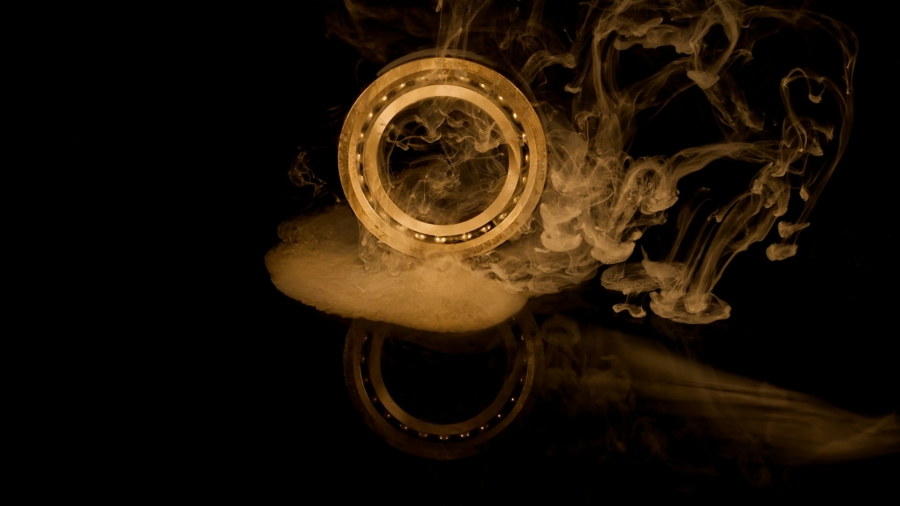Ball bearings serve as fundamental components in countless industrial applications, from automotive systems to heavy machinery. The materials used in their construction directly impact performance, durability, and operational efficiency.
Understanding the composition and characteristics of these materials enables manufacturers to select optimal bearing solutions for their specific applications.
The selection of appropriate ball bearing materials involves careful consideration of operational conditions, load requirements, and environmental factors. Different materials offer distinct advantages in various applications, making material knowledge crucial for optimal bearing performance.
This comprehensive examination explores the primary materials used in precision ball bearing manufacturing and their specific applications.
Steel Bearings: The Foundation of Modern Industry
Steel remains the most widely used material in ball bearing manufacturing due to its exceptional balance of strength, durability, and cost-effectiveness. High-carbon chromium steel, typically designated as AISI 52100, represents the industry standard for most bearing applications.
This material provides excellent hardness retention, fatigue resistance, and dimensional stability under normal operating conditions.
The manufacturing process for steel bearings involves precise heat treatment procedures that achieve optimal hardness levels while maintaining dimensional accuracy.
These processes create uniform microstructures that enhance load-carrying capacity and extend service life. Steel bearings demonstrate consistent performance across a wide range of temperatures and loading conditions.
Alloy Steel Compositions
Modern steel bearings utilize carefully controlled alloy compositions that optimize specific performance characteristics.
Chromium content typically ranges from 1.3% to 1.6%, providing enhanced hardness and wear resistance. Carbon content, usually between 0.95% and 1.10%, contributes to hardenability and strength characteristics.
Additional alloying elements such as manganese, silicon, and molybdenum fine-tune material properties for specific applications.
These elements improve hardenability, reduce internal stress, and enhance fatigue resistance. The precise control of these compositions ensures consistent material properties across production batches.
Stainless Steel Solutions for Demanding Environments
Stainless steel ball bearings offer superior corrosion resistance compared to standard steel alternatives, making them ideal for applications exposed to moisture, chemicals, or extreme temperatures.
The most common stainless steel grades used in bearing manufacturing include 440C, 316, and 17-4 PH, each offering distinct advantages for specific applications.
The corrosion resistance of stainless steel bearings eliminates the need for additional protective coatings in many applications.
This characteristic proves particularly valuable in food processing, pharmaceutical, and marine environments where contamination concerns prohibit the use of external lubricants or protective treatments.
Grade 440C Characteristics
Grade 440C stainless steel provides the highest hardness achievable in stainless steel bearings, typically reaching 58-60 HRC after heat treatment.
This material offers excellent wear resistance while maintaining good corrosion resistance properties. The high carbon content enables superior load-carrying capacity compared to lower-grade stainless steels.
Manufacturing standards for 440C bearings require precise heat treatment procedures to achieve optimal properties. The material responds well to through-hardening processes that create uniform hardness distribution throughout the bearing components.
Ceramic Materials for High-Performance Applications
Ceramic ball bearings represent advanced solutions for applications requiring exceptional performance characteristics.
Silicon nitride (Si3N4) stands as the most common ceramic material for bearing applications, offering superior hardness, low density, and excellent thermal properties. These materials excel in high-speed, high-temperature, and corrosive environments.
The manufacturing process for ceramic bearings involves precise sintering techniques that create dense, uniform microstructures.
These processes achieve exceptional dimensional accuracy and surface finish quality. Ceramic bearings demonstrate minimal thermal expansion, making them ideal for precision applications requiring tight tolerances.
Silicon Nitride Properties
Silicon nitride ceramic bearings offer a density approximately 60% lower than steel, reducing centrifugal forces in high-speed applications.
The material exhibits excellent thermal shock resistance and maintains dimensional stability across wide temperature ranges. These properties enable operation at speeds significantly higher than possible with steel bearings.
The hardness of silicon nitride exceeds that of steel by approximately 50%, providing superior wear resistance and extended service life. This hardness advantage becomes particularly evident in contaminated environments where abrasive particles would rapidly degrade steel bearings.
Hybrid Bearing Configurations
Hybrid bearings combine ceramic rolling elements with steel races, providing an optimal balance of performance and cost-effectiveness.
This configuration captures the primary advantages of ceramic materials while maintaining the proven reliability of steel races. Hybrid bearings offer significant performance improvements over all-steel alternatives in many applications.
The manufacturing of hybrid bearings requires precise matching of thermal expansion coefficients between ceramic and steel components.
Specialized design techniques ensure proper load distribution and stress management throughout the bearing system. These considerations enable hybrid bearings to achieve superior performance characteristics.
Performance Advantages
Hybrid bearings demonstrate reduced friction coefficients compared to all-steel alternatives, resulting in lower operating temperatures and reduced energy consumption. The lower density of ceramic balls reduces centrifugal forces, enabling higher rotational speeds while maintaining structural integrity.
The electrical insulation properties of ceramic balls prevent electrical current passage through the bearing, eliminating the risk of electrical damage in motor applications.
This characteristic proves particularly valuable in variable frequency drive applications where bearing currents can cause premature failure.
Specialized Coatings and Surface Treatments
Advanced surface treatments enhance the performance characteristics of ball-bearing materials beyond their base properties. These treatments include specialized coatings, nitriding processes, and surface hardening techniques that improve wear resistance, reduce friction, and enhance corrosion protection.
Physical vapor deposition (PVD) coatings provide exceptional hardness and wear resistance while maintaining dimensional accuracy.
These coatings can extend bearing life by several hundred percent in demanding applications. The thin coating thickness minimizes the impact on bearing clearances while providing substantial performance benefits.
Nitriding Processes
Nitriding treatments create hard, wear-resistant surface layers that enhance bearing performance in contaminated environments.
These processes diffuse nitrogen into the surface layers, creating hard nitride compounds that resist wear and corrosion. Nitrided bearings demonstrate exceptional performance in applications with inadequate lubrication.
The controlled atmosphere nitriding process maintains dimensional accuracy while achieving substantial hardness improvements. This treatment proves particularly effective for bearings operating in high-temperature environments where traditional lubricants lose effectiveness.
Material Selection Criteria for Optimal Performance
Proper material selection requires a comprehensive evaluation of operational conditions, performance requirements, and economic considerations.
Load characteristics, rotational speeds, temperature ranges, and contamination levels all influence material selection decisions. Understanding these factors ensures optimal bearing performance and service life.
Environmental conditions significantly impact material selection decisions. Applications involving exposure to chemicals, extreme temperatures, or electrical currents require specialized materials that standard steel bearings cannot provide effectively.
The investment in premium materials often proves cost-effective through extended service life and reduced maintenance requirements.
Load and Speed Considerations
High-load applications typically favor steel bearings due to their superior load-carrying capacity and proven reliability. The fatigue resistance of properly heat-treated steel enables extended service life under heavy loading conditions.
Manufacturing standards ensure consistent material properties that support predictable performance characteristics.
High-speed applications often benefit from ceramic or hybrid bearing solutions that minimize centrifugal forces and reduce operating temperatures. The lower density and superior thermal properties of ceramic materials enable operation at rotational speeds impossible with steel bearings.
Quality Standards and Manufacturing Specifications
International standards govern the material specifications and manufacturing processes for precision ball bearings.
These standards ensure consistent material properties and dimensional accuracy across manufacturers. Compliance with established standards assures bearing quality and performance characteristics.
Material traceability requirements enable manufacturers to verify the composition and heat treatment history of bearing materials.
This documentation proves essential for applications requiring certified material properties or compliance with specific industry standards. Proper documentation ensures accountability throughout the manufacturing process.
Testing and Verification Protocols
Comprehensive testing protocols verify material properties and bearing performance under simulated operational conditions.
These tests include hardness verification, dimensional accuracy measurement, and performance evaluation under various loading conditions.
Rigorous testing ensures that bearings meet specified performance requirements. Statistical process control methods monitor material consistency throughout production.
These systems identify variations that could impact bearing performance and enable corrective actions before defective products reach customers. Consistent material properties translate to predictable bearing performance in service.
Advancing Manufacturing Through Material Innovation
The continuous development of ball bearing materials drives improvements in manufacturing efficiency and equipment reliability.
Advanced materials enable operation in increasingly demanding environments while extending service life and reducing maintenance requirements. This progression supports the evolution of modern manufacturing technology.
Material innovation continues to push the boundaries of bearing performance through the development of new alloys, advanced ceramics, and specialized surface treatments.
These advances enable manufacturers to achieve higher speeds, greater loads, and extended service life compared to traditional materials.
The strategic selection of appropriate ball bearing materials represents a critical decision that impacts manufacturing performance, operational costs, and system reliability.
Understanding the characteristics and applications of different materials enables optimal bearing selection for specific operational requirements.
This website provides comprehensive information about material options and their applications, supporting informed decision-making for manufacturing professionals seeking to optimize their bearing selection strategies.

